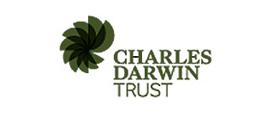Little Red Riding Hood-Habitats and food chains
A collection of resources that link to the story of Little Red Riding Hood. This story is set in a wood and makes a lovely starting point for finding out about habitats. The resources here can be used to cover many objectives, supporting children to learn about habitats and to realise that different animals are suited to living in different habitats. It will also give them the opportunity to identify a variety of plants and animals that live in a woodland habitat. They could also start to learn about simple food chains.
It is worth giving children experience of more than one version of this story, for example in some versions Granny is eaten by the wolf and in others is locked in the wardrobe.. This is likely to spark conversations about what is true and not always taking what is written down at face value (this is an important part of thinking scientifically). This idea of different points of view could be emphasised if you included stories written from the wolf's point of view such as 'The Wolf's Story' by Toby Forward or 'The True Story of Little Red Riding Hood' by several authors.
Also included are some resources which link to Forest Schools. If you do decide to take your children to the woods you may find that initially some are nervous. This is because stories such as Little Red Riding Hood lead them to believe that all forests are dangerous places. Also, many young children have a misconception that wolves and foxes are similar animals. More information about the differences between these animals and where they can be found will be helpful. A book such as 'Walk with a Wolf' by Janni Howker will help them to realise that wolves live in a completely different habitat to them, and that in real life they do not eat little girls!
Education Pack: Food Chains
This resource comprises some sets of cards which can be used to build some food chains, and an idea for an active game which could be incorporated into a PE lesson.
Make links to Little Red Riding Hood by thinking about the food chain that would include a wolf (using the opportunity to reassure children that wolves do not naturally predate on people). Children could then go on to explore habitats and food chains which are local to them.
Outdoor Learning with Forest School
This 15 minute video shows Year 1 children enjoying their fortnightly 'Forest Schools' visit to a local woodland in all weathers. Teachers and parents also talk about the impact that this has had upon children's levels of confidence and upon their speaking and listening skills.
This clip might prompt you to ask how you could give your children some of these benefits. Even the occasional visit to a woodland could be beneficial and help children to become more familiar with this type of habitat as well as building their levels of independence and confidence.
Activities which could link to the story of Little Red Riding Hood might include finding ways to navigate around a wood without getting lost and investigating what kinds of flowers she might have been able to pick (encourage children to take photographs rather than picking them).
Good Practice Resource: Developing Children's Learning Through Work in the Natural Environment
This is some more information (from OFSTED this time) about the benefits for children of being given regular access to the outside classroom. It is included here as, even if you do not need convincing of the benefits, you may need evidence to convince colleagues or parents of the value.
Snap science: teaching framework - year 2
This resource provides two activities to support 6-7 year olds learning about the animals that live in a local habitat. The first activity encourages them to identify the plants and animals that they find there. Subsequent trips are then to record how many of each plant and animal they see and how this changes over the course of a year.
They could use the information that they collect to compare and contrast with the animals that live in a landscape that does support wolves (assuming that their local one does not). They could also think about how different the walk to Grandma's house might be at different times of the year.
Module 4: Interdependence
These teachers notes and presentation for children will help both children and adults to understand that working scientifically involves using your senses to observe the everyday world and to use their observations to prompt them to ask and answer their own questions. This is in contrast to popular perceptions of a scientist who is seen as someone who exclusively uses specialised tools and works in a laboratory to make 'discoveries' which have little relationship to everyday life.
In particular this presentation describes how one famous scientist (Darwin) made extremely significant discoveries in this way. Teachers may want to choose just one or two of the slides from this presentation to share with their class. However, most useful is slide 6 which describes Darwin's ways of working and will show children that most of his methods could be used by them.
Education Pack: Senses
This resource has suggestions for some guided activities which could be carried out during a site visit. They would encourage children to fully use their senses and could well support them to raise their own questions so that they could work scientifically in the way outlined in the Darwin resource (above).
Education Pack: Woodland Tales
This resource has ideas for linking story telling to the topic of woodlands.
The story stick activity would support children to recount the story of a walk through the woods in chronological order. This is a valuable skill both for future non-fiction writing (such as recounting a science experiment), for retelling a familiar story, or for original story writing.
This resource also has suggestions for ways that you could use the woodland as a setting for your own retelling of the Little Red Riding Hood story or to work together to make a new story inspired by the woodland habitat and props found within it.
Habitats and Food Chains - Fox and Hedgehog
This short clip shows actors playing the part of different parts of a food chain (fox, hedgehog, caterpillar and plant). It could be used to spark discussion about what will happen to other parts of the food chain if one element is taken away. It could also be used to inspire a drama activity where children acted out their own food chain. If children researched their own food chain to act out this could also be used as a valuable assessment opportunity to elicit what children understand about food chains.
Coding and Science: Animal Habitat Scenes
This resource will support you to make links between the Y2 topic of habitats and coding. You could also use the activity to make links to making and reading maps as you think of Little Red Riding Hood's journey to see her Grandmother.
The Wolves of Yellowstone Park
Here is a film clip showing how reintroducing wolves to Yellowstone park had a beneficial effect on all of the other animals including their main source of prey; elk. The elk benefited because the weakest ones were removed from their population. Also, there was now sufficient food for them as there were less elk eating the vegetation. Other animals who ate the vegetation, such as beavers, also benefited as there was now enough food for them too.
Do watch this clip before sharing it with your class and be aware of any children who may be frightened of wolves; do not show the footage to them until they have a better understanding!





